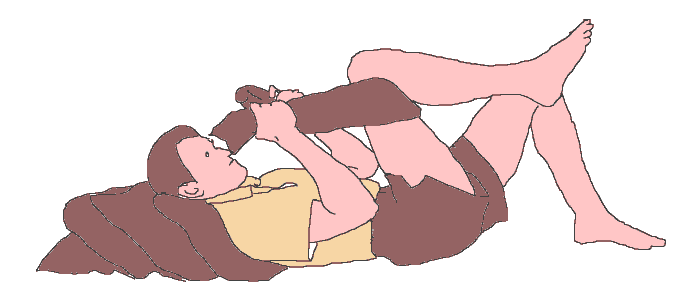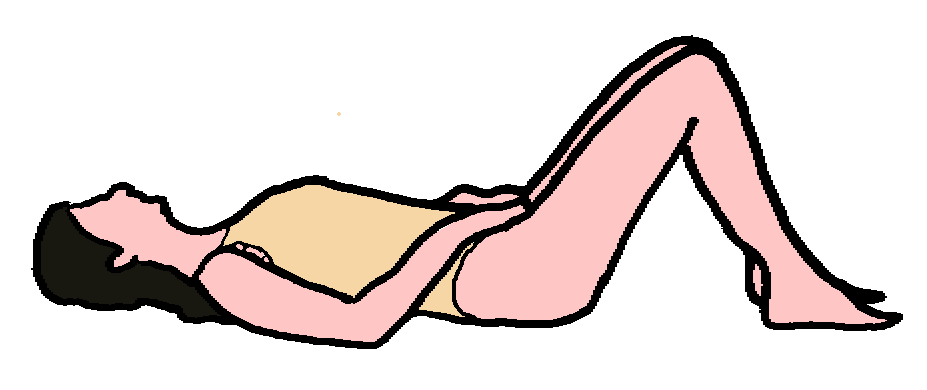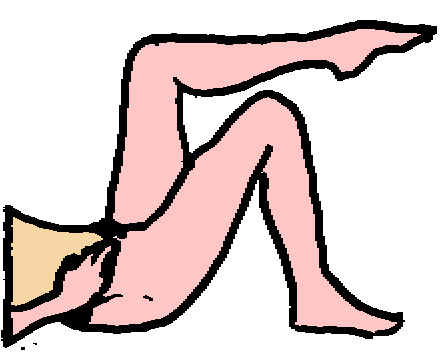|
|
|---|
This is the first in a progression of lower back rehabilitation exercises. Your aim is to
hold your pelvis absolutely steady while lifting your knee off the floor with minimal
back pain.
Assisted Knee Raises:- Start Position
- Lie on the floor in the Relaxation Position
- Place Pillows behind your head and shoulders, use a towel to make a sling for your right leg (diagram).
- Pelvic Neutral
- Anchor your scapulas.
- Chin gently tucked.
Assisted Knee Raises:- Action
- Zip and hollow and breathe in.
- (Breathing out): Using the towel sling for assistance, raise your right knee
while keeping your pelvis absolutely still. Only take it as far as it will comfortably go.
- (Breathing in): maintain "Zip and Hollow", and at the same time, return your
leg to the start position.
- Five times each leg!
Knee Raise (no Assistance):- Action
If you can do the assisted version with a stable pelvis & without pain, try it without
the towel! - (see diagram).
Assisted Knee Raises (Scroll right>>>>....)
|
Assisted Knee Raises, Start Position:-

|
Assisted Knee Raises, Action:-

|
Knee Raises, Start Position:-

|
Knee Raises, Action:-

|
What Assissted Knee Raises do:-
Promotes stability of your lower back and pelvis during hip joint flexion. This is done by:-
- Improving the strength and/or control of your abdominal muscles so that
only your hip joint moves. (Your spine does not move!)
- Giving you complete control with the sling so that you can work
within the limits of your pain and abdominal muscle strength.
Assisted Knee Raise © Bruce Thomson, EasyVigour Project
(scroll up^^^^...)
|
Watch Points for Assisted Knee Raises
The whole aim of the Assisted Knee Raise is to keep your pelvis and spine absolutely still!
- Work slowly! Move within the limits of pain!
- Don't let your pelvis move! The pelvic clock face looks straight up and never deviates.
- If you cannot raise your knee with the aid of a towel assist, seek the help of a professional.
Comments
- This exercise is safe for almost any low back pain, and you should use it as your starting exercise.
- It is however especially useful for the kyphosis-lordosis posture type (see picture).
This posture type is associated with weak abdominal muscles.
|

|
Reference
- Shirley A Sahrman: "Movement Impairment Syndromes" Publ. Mosby, 2002
ISBN 0-8016-7205-8
- Bruce Thomson Engage Gluteus maximus!
- Shirley A Sahrmann: Diagnosis and Treatment of Movement Impairment Syndromes;
Publ. Mosby 2002
|




